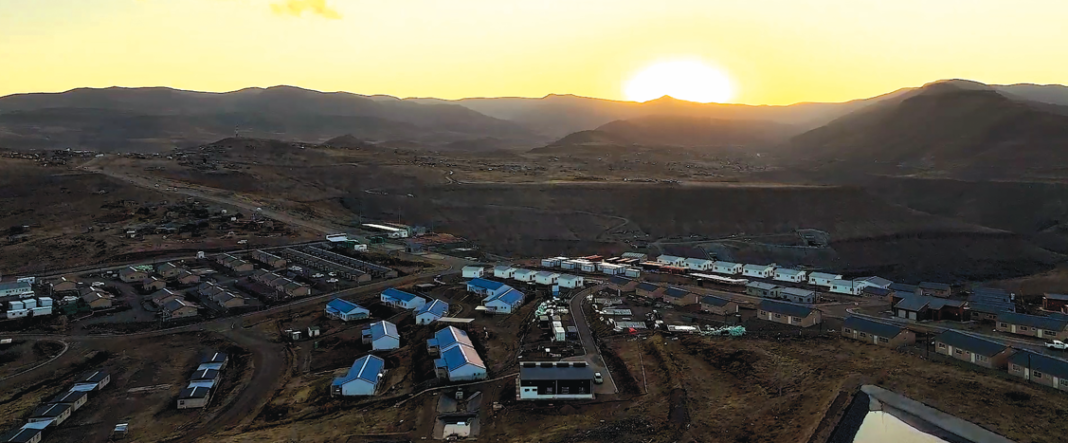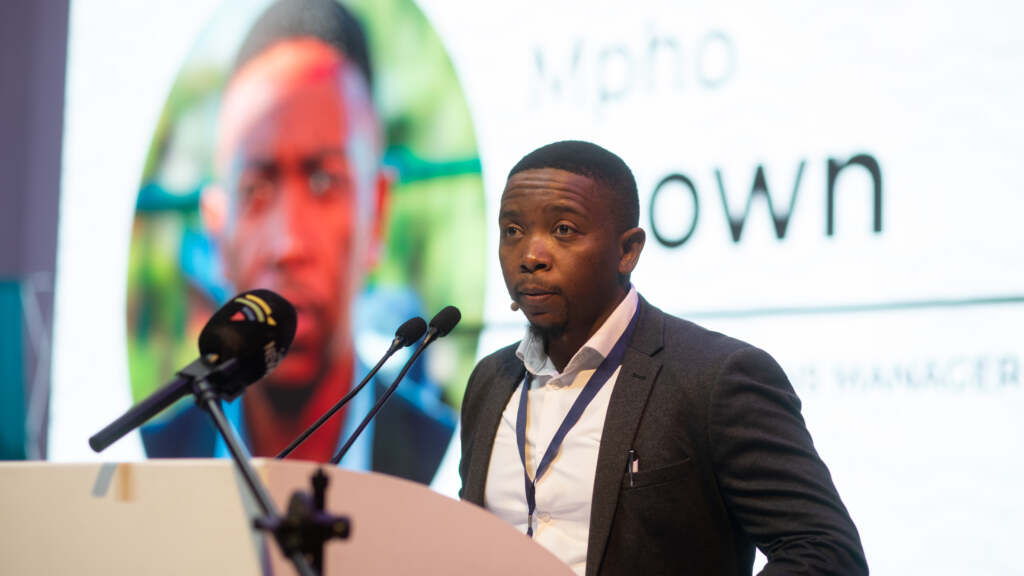The Lesotho Highlands Development Authority (LHDA) says while construction on Phase II of the Lesotho Highlands Water Project (LHWP) has experienced delays, the project remains firmly on course to deliver lasting benefits for Lesotho and its people.
Speaking during a press club earlier this month, LHDA Chief Executive, Tente Tente, acknowledged that progress has been slower than planned but assured that the project will “finish stronger,” emphasising that lessons from Phase I have shaped a more transparent, inclusive, and development-driven approach this time around.
“We started slowly, but I think we will finish stronger. Looking at the overall progress, the planned progress is about 57 percent, while the actual progress is 48 percent. This says we are about 10 percent behind schedule,” Tente told reporters.
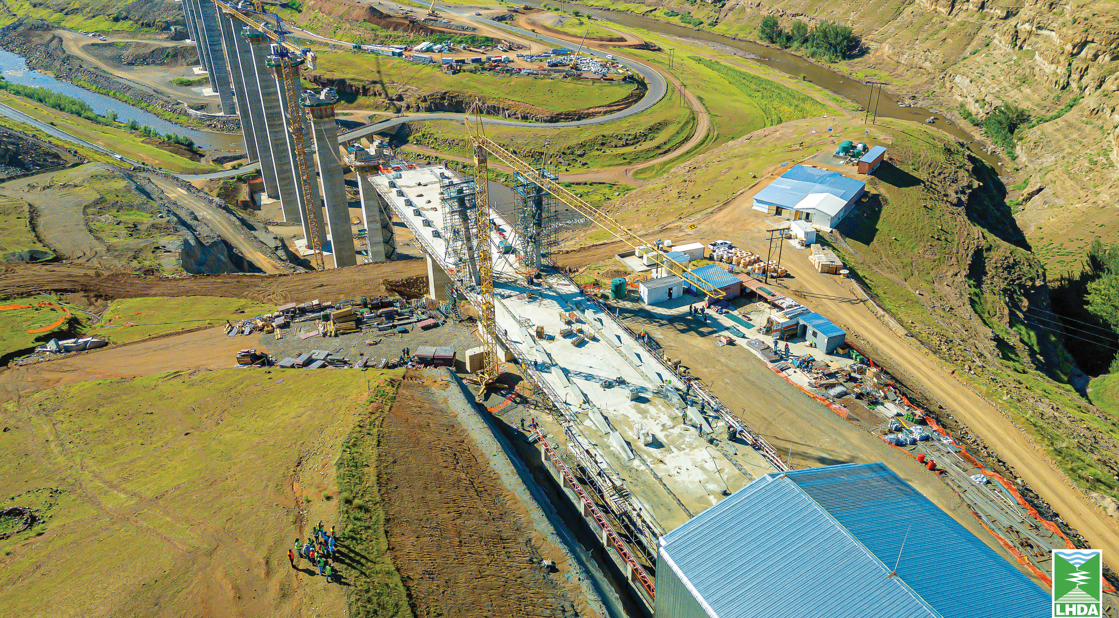
A nation’s lifeline and economic anchor
The Lesotho Highlands Water Project (LHWP), a bi-national undertaking between Lesotho and South Africa, is one of Africa’s most ambitious transboundary water transfer and hydropower initiatives. Conceived under the 1986 Treaty, its primary objective is to transfer water from Lesotho’s highlands to South Africa’s industrial heartland while generating hydroelectric power for Lesotho.
Phase I, completed in two parts (1A and 1B), gave birth to Katse and Mohale dams, tunnels, and the Muela Hydropower Station, which now generates nearly half of Lesotho’s domestic electricity needs.
Phase II, currently underway, includes the construction of the Polihali Dam in Mokhotlong, a 38-kilometre transfer tunnel to Katse, access roads, bridges, and the expansion of power generation capacity. Once complete, the project will significantly increase water exports to South Africa, while boosting local infrastructure, employment, and socio-economic development in Lesotho.
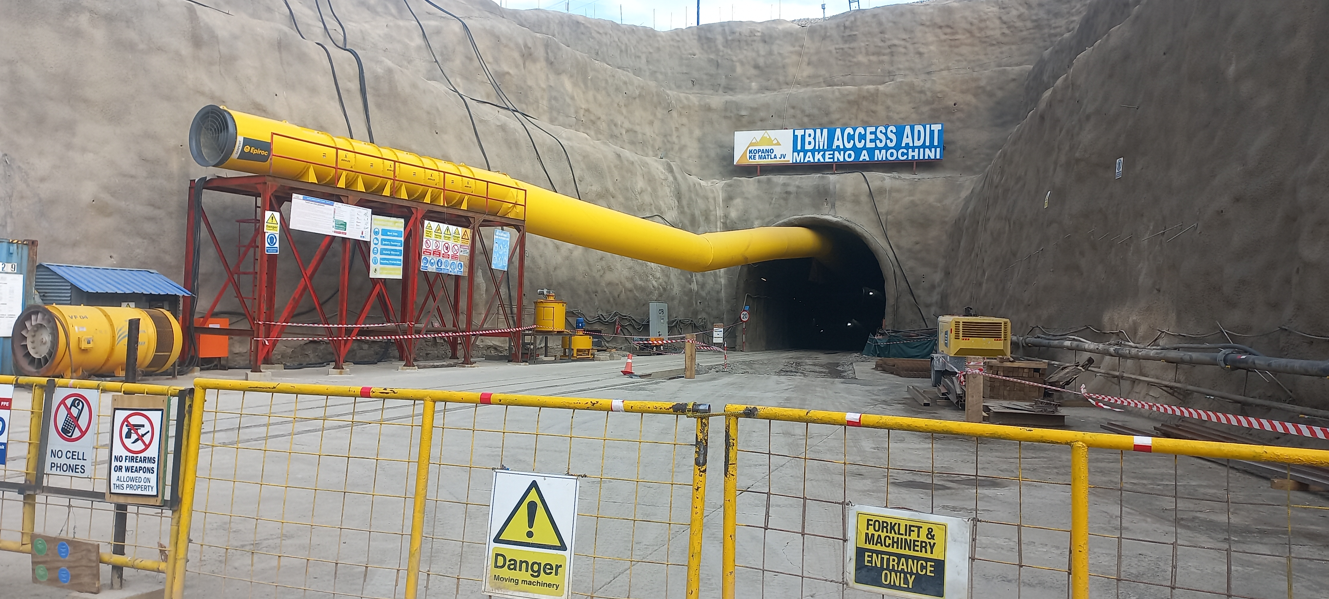
Behind the schedule but moving forward
Despite progress across multiple fronts, the LHDA Chief Executive admitted that the project is behind schedule in key construction areas. The bridge construction works are 91 percent complete, compared to the planned 97 percent.
The transfer tunnel, which will connect Polihali Dam to Katse, is at 46 percent completion instead of the expected 53 percent. The dam construction, the centrepiece of Phase II, is furthest behind, sitting at 37 percent against the planned 50 percent.
Still, Tente remained optimistic.
“The dam is beginning to take shape; the rock fill is now visible. About five million cubic metres of rock have already been moved, which is 38 percent of the intended 14 million cubic metres,” he said.
Jobs and local participation
Employment generation remains one of the most visible impacts of the LHWP. So far, 16,380 workers have been hired, with 91 percent being Basotho.
“We are often accused of employing foreign workers, but that is less than 10 percent,” Tente said. “We live in a global village where countries export skills. We also have many Basotho working abroad, it is the same principle.”
Within Mokhotlong district, where most of the Phase II works are taking place, 7,583 locals, nearly half of the total workforce, have been employed. “Naturally, it is easier to hire people living close to the project area,” Tente explained.
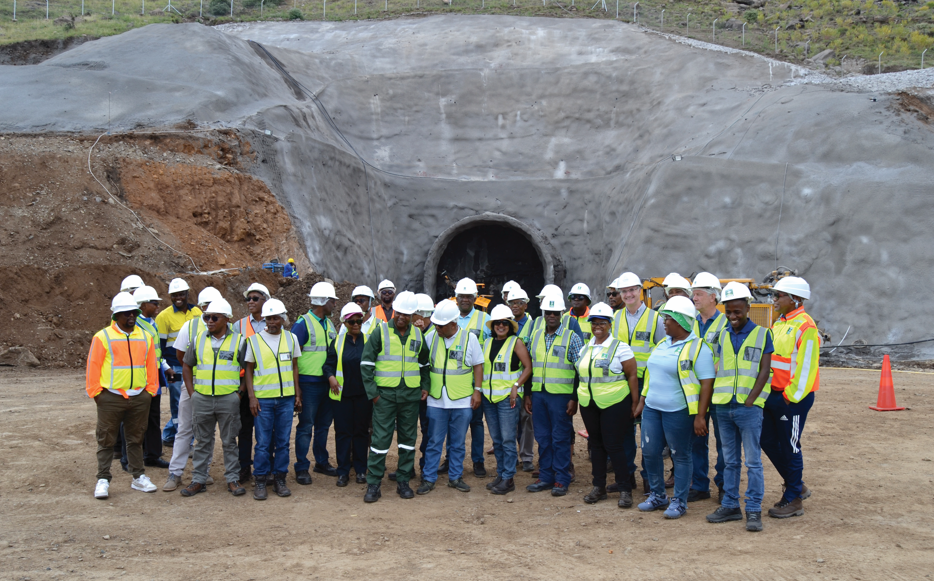
Resettlement and compensation: Lessons from Phase I
One of the most sensitive aspects of the project has always been compensation and resettlement, as thousands of households and graves have had to be relocated to make way for dams, tunnels, and infrastructure.
Tente said that Phase II has introduced a more meticulous compensation process after acknowledging weaknesses during Phase I. The LHDA has rolled out an asset verification system to document affected properties, including photographs, sizes, and ownership details.
To date, 12,843 verification forms have been completed, with 7,456 captured digitally. Of these, 93 percent have already been paid, while the remaining cases are pending due to disputes, lack of identification, or unresolved family ownership issues.
On resettlement, about 36 percent of households in construction zones have already been relocated. Around 400 graves have been moved so far, with nearly 1,000 more expected to be relocated from areas that will be inundated once the dam fills.
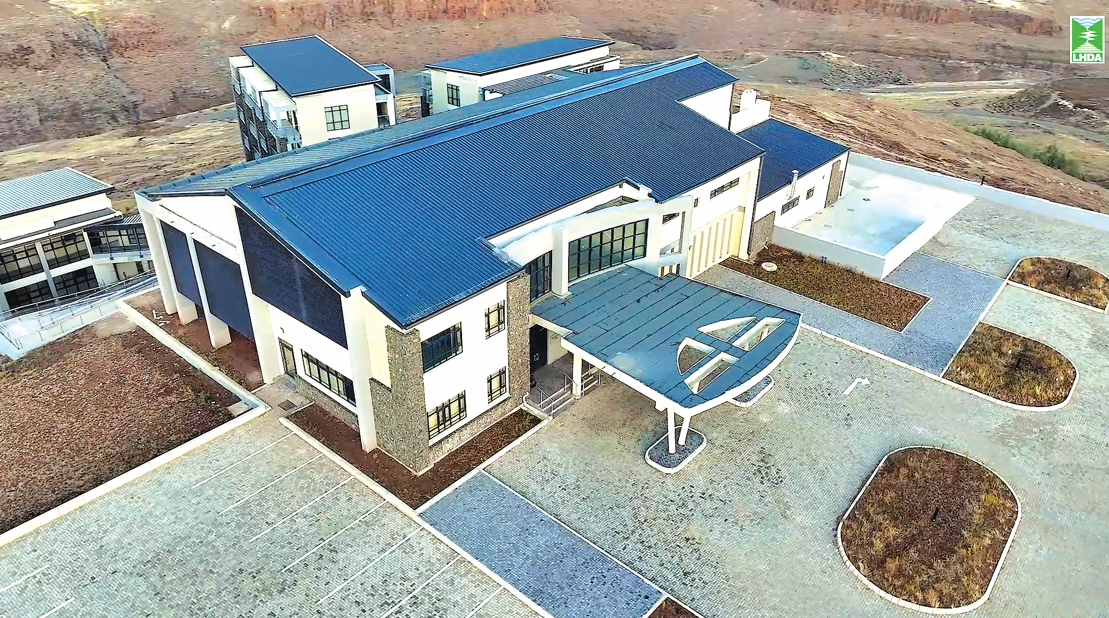
Economic impact and legacy of the LHWP
Since its inception, the LHWP has stood as one of the most transformative undertakings in the history of the Kingdom of Lesotho. Conceived in partnership with South Africa, the project was designed not only to transfer water from the highlands of Lesotho to the Vaal River system but also to generate hydroelectric power for Lesotho and stimulate national development. Decades later, its legacy continues to shape the country’s economy, infrastructure, and livelihoods.
According to Tente, the LHWP has contributed immensely to Lesotho’s socio-economic progress and remains a cornerstone of the country’s development story. Speaking during a Phase II progress update on October 10, 2025, he described the project’s economic impact in terms both tangible and transformative.
He revealed that cumulative royalty revenues paid by South Africa to Lesotho now exceed M19 billion, with monthly inflows averaging between M300 million and M400 million. These royalties, he explained, are deposited directly into Lesotho’s Consolidated Fund, from which the government finances national priorities such as education, healthcare, and infrastructure.
“These figures are not just numbers,” Tente said, “they represent schools built, hospitals staffed, families sustained, and national development funded through this project’s legacy.”
Under Phase I of the LHWP, the achievements were far-reaching. Tente reported that 1,000 kilometres of road networks were constructed, opening up once-isolated highland regions to trade, services, and opportunity. The project also generated employment for 16,000 Basotho, who collectively earned over M1 billion in wages during the initial construction phase. In addition, more than 40 classrooms were built across 16 schools, and several new health facilities were established to serve resettled and nearby communities.
Local enterprise was another area of measurable impact. Basotho-owned contractors and suppliers, Tente said, benefitted through procurement and service contracts worth over M1.2 billion, ensuring that a significant share of the project’s economic footprint remained within the domestic economy. This, he added, helped nurture a local construction and services industry that continues to play an active role in national infrastructure projects.
Beyond these immediate financial gains, the project’s impact has extended to institutional and human-capital development. The implementation of the LHWP has fostered the growth of skilled labour in engineering, environmental management, and project administration, creating a generation of professionals capable of managing complex national projects.
The accompanying investment in roads, bridges, and utilities has also opened new corridors of commerce between Lesotho’s highlands and lowlands, stimulating local trade and tourism.
For Tente, these outcomes underscore a deeper truth about the LHWP, that it is not merely an engineering venture, but a nation-building enterprise.
“Since the inception of the LHWP,” he said, “we have not just seen the construction of world-class infrastructure, but also human progress, livelihoods transformed, and communities relocated with care.”
In his view, the figures tell a broader story of a project that continues to finance Lesotho’s development while symbolising the country’s resilience and partnership with its neighbour, South Africa. The revenues generated have strengthened Lesotho’s fiscal position, while the infrastructure built under Phase I laid the foundation for the more ambitious Phase II, now underway in Mokhotlong.
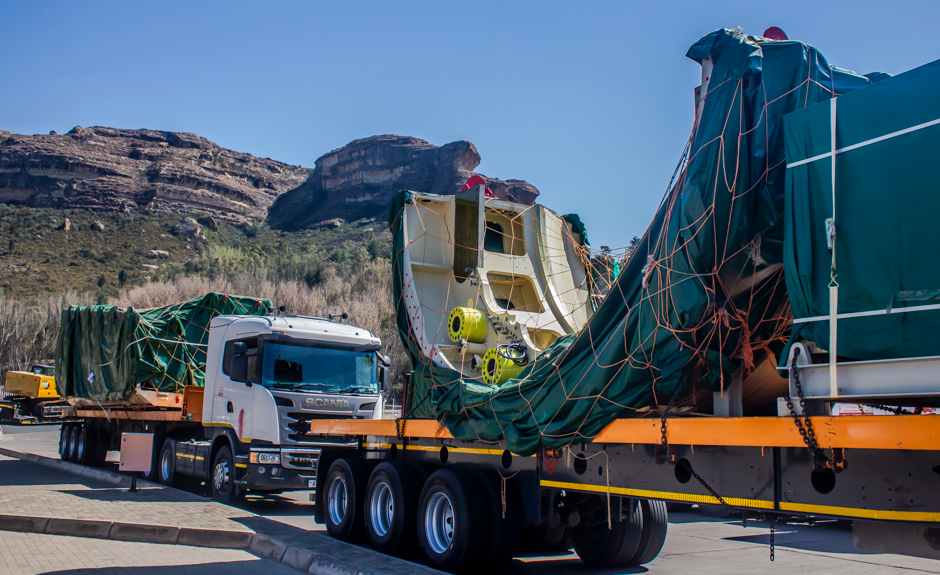
Phase II: Continuing the development story
In Phase II, 296 households are earmarked for relocation, with 21 already resettled and compensated. The total compensation bill across all project phases now exceeds M6 billion — M470 million of which was paid during Phase I, and M160 million already disbursed under Phase II.
“Beyond compensation, the project has been the cornerstone of Lesotho’s physical strength,” said Tente. “These figures are not just numbers; they represent schools built, hospitals staffed, families sustained, and national development funded.”
Protecting credibility and public trust
Tente emphasised that LHDA’s continued success depends not only on technical expertise but also on public trust and transparent communication.
“A reputation for an organization like ours would not be great if it is not anchored in credibility, transparency, and integrity,” he said. “When reputation falters, the benefits that flow to Lesotho — royalties, jobs, livelihoods — can easily be lost.”
He urged journalists and the public to understand that the LHDA is more than an engineering entity; it is a symbol of partnership, progress, and national resilience.
“LHDA is not just an engineering masterpiece; it is a symbol of partnership between nations, institutions, and people. Beyond the machinery and cement, what will endure is trust, and trust is built, sustained, and protected by the stories that we write.”
The Lesotho Highlands Water Project at a glance
The project’s scope encompasses a series of dams, tunnels, and hydropower stations, as well as supporting infrastructure such as roads, bridges, and social development facilities. It is administered by the Lesotho Highlands Development Authority (LHDA) on Lesotho’s side, and by the Trans-Caledon Tunnel Authority (TCTA) on South Africa’s side.
Phase I: Completed foundations of a landmark project
Phase I, which commenced in the late 1980s and was completed in the early 2000s, laid the foundation for what would become one of the most significant water infrastructure systems on the African continent. It consisted of two sub-phases: Phase IA and Phase IB.
Phase IA saw the construction of the Katse Dam, a 185-metre-high double-curvature concrete arch dam, one of the highest in Africa, and the Muela Hydropower Station, which supplies nearly half of Lesotho’s domestic electricity needs. This phase also included a 45-kilometre transfer tunnel from Katse Dam to Muela and a 37-kilometre delivery tunnel to South Africa.
Phase IB expanded the system through the construction of the Mohale Dam, located on the Senqunyane River, and a transfer tunnel connecting Mohale to Katse. Collectively, these works created a vast water-transfer and energy network that now supplies around 780 million cubic metres of water annually to South Africa.
Beyond dams and tunnels, Phase I had a profound infrastructural and socio-economic footprint in Lesotho. The project brought the construction of approximately 1,000 kilometres of roads, opening previously inaccessible highland regions to trade, tourism, and public services. It also generated thousands of jobs and spurred the creation of new businesses, laying the groundwork for Lesotho’s integration into regional development networks.
Phase II: Building on the legacy
The second phase of the LHWP, now underway, is designed to expand the system’s capacity and long-term sustainability. Phase II includes the construction of the Polihali Dam, situated in the Mokhotlong district at the confluence of the Khubelu and Senqu rivers. Once complete, Polihali will create a reservoir with a capacity of approximately 2.3 billion cubic metres, and will significantly increase the volume of water transferred to South Africa each year.
A key component of Phase II is the Polihali-Katse Transfer Tunnel, a 38-kilometre underground conduit that will connect the new dam to the existing Katse reservoir, effectively integrating it into the established Phase I system. Alongside these major structures, the project also entails the construction of access roads, bridges, and other supporting infrastructure required for transport, logistics, and community development in the project area.
In addition to water infrastructure, Phase II includes plans for power system expansion to enhance Lesotho’s energy generation capacity and reduce reliance on imported electricity. The broader vision is to make Lesotho not only self-sufficient in power but eventually a net exporter of clean, renewable hydroelectric energy within the Southern African region.
Partnership and financing
The LHWP is governed by a binational treaty and jointly managed institutions that ensure mutual benefit and accountability between the two countries. The Government of Lesotho and the Government of South Africa each finance and manage different components of the project: South Africa primarily funds the water-transfer infrastructure, while Lesotho assumes responsibility for the hydroelectric power component.
Funding for Phase II is drawn from a combination of loans, grants, and revenues generated from ongoing water transfers under Phase I. The financial structure reflects the project’s hybrid nature, a development initiative with both commercial and social dimensions. International partners, including development finance institutions and commercial banks, have also provided support in the form of concessional loans and technical assistance.
Timeline and outlook
Construction on Phase II officially began in 2019, with major contracts awarded for the Polihali Dam, the transfer tunnel, and related works. According to the LHDA, the project is expected to be completed by 2028, though Tente has noted that progress timelines are subject to adjustment due to various logistical and environmental factors.
When fully completed, the LHWP will deliver significant long-term benefits: increased water-transfer capacity to South Africa, sustained royalty income for Lesotho, enhanced electricity production, and a stronger foundation for national infrastructure and human development.
The project’s scale and scope have made it a model for transboundary water cooperation in Africa, an example of how shared natural resources can be harnessed for regional stability and mutual prosperity.
Summary
- The Lesotho Highlands Development Authority (LHDA) says while construction on Phase II of the Lesotho Highlands Water Project (LHWP) has experienced delays, the project remains firmly on course to deliver lasting benefits for Lesotho and its people.
- Speaking during a press club earlier this month, LHDA Chief Executive, Tente Tente, acknowledged that progress has been slower than planned but assured that the project will “finish stronger,” emphasising that lessons from Phase I have shaped a more transparent, inclusive, and development-driven approach this time around.
- One of the most sensitive aspects of the project has always been compensation and resettlement, as thousands of households and graves have had to be relocated to make way for dams, tunnels, and infrastructure.

Authored by our expert team of writers and editors, with thorough research.


